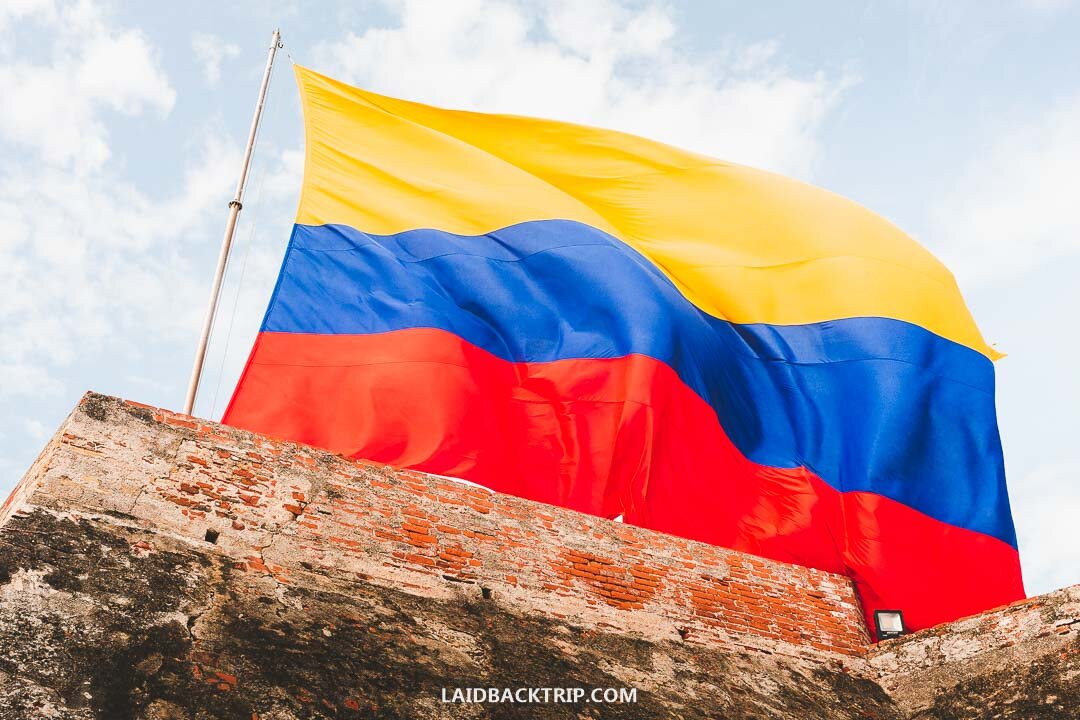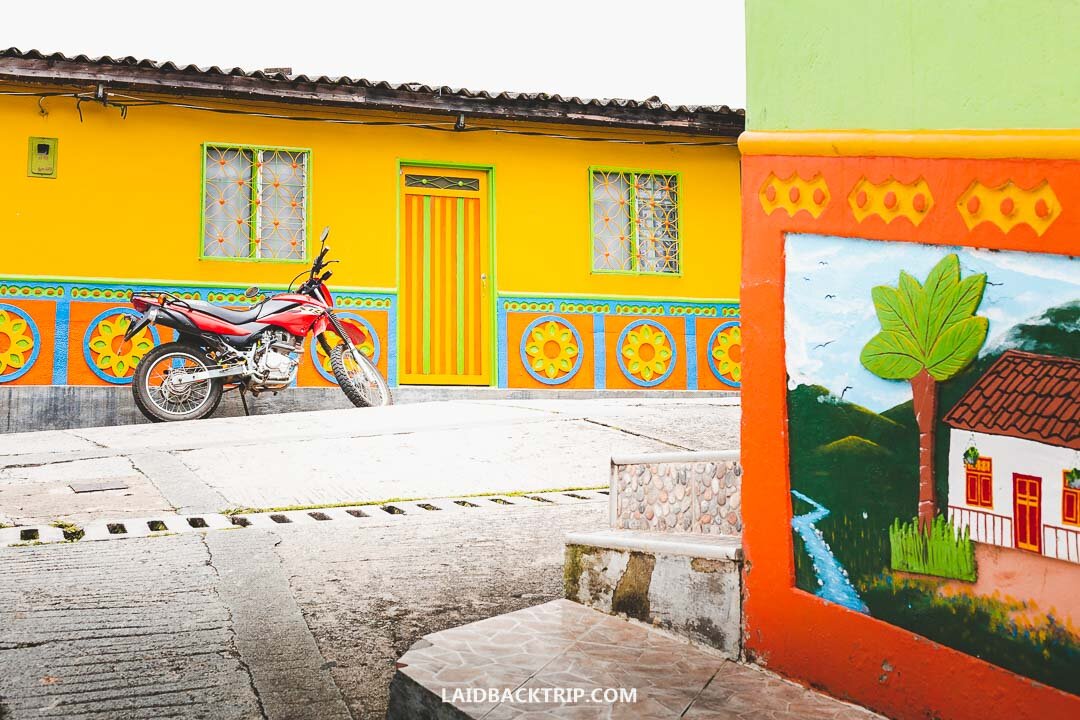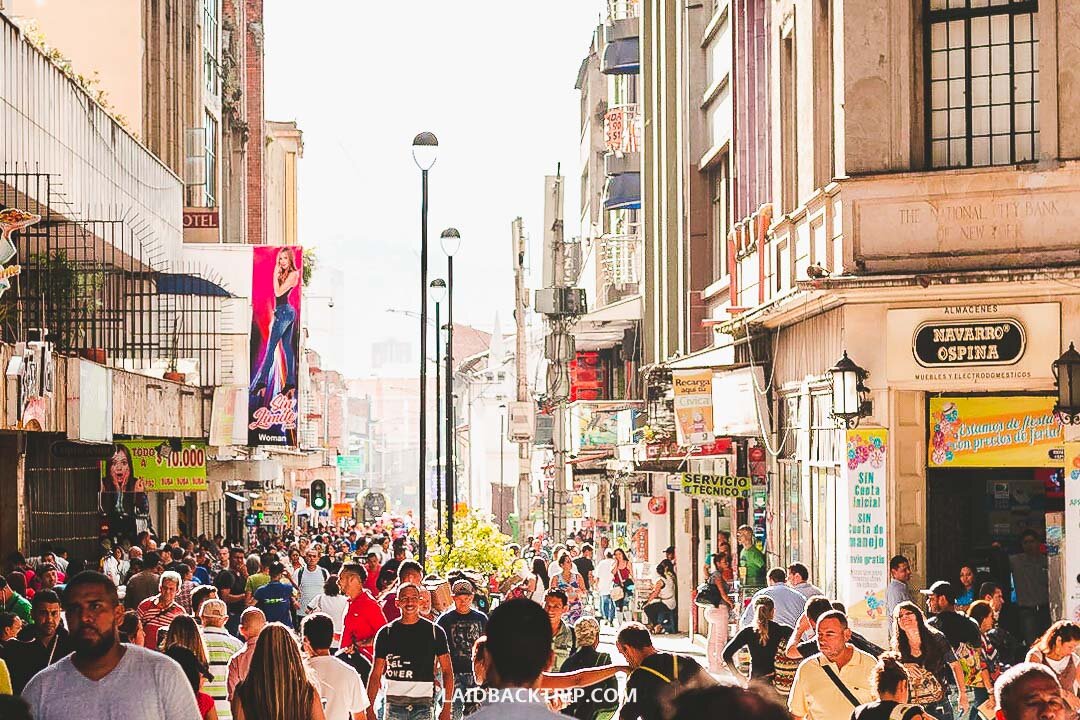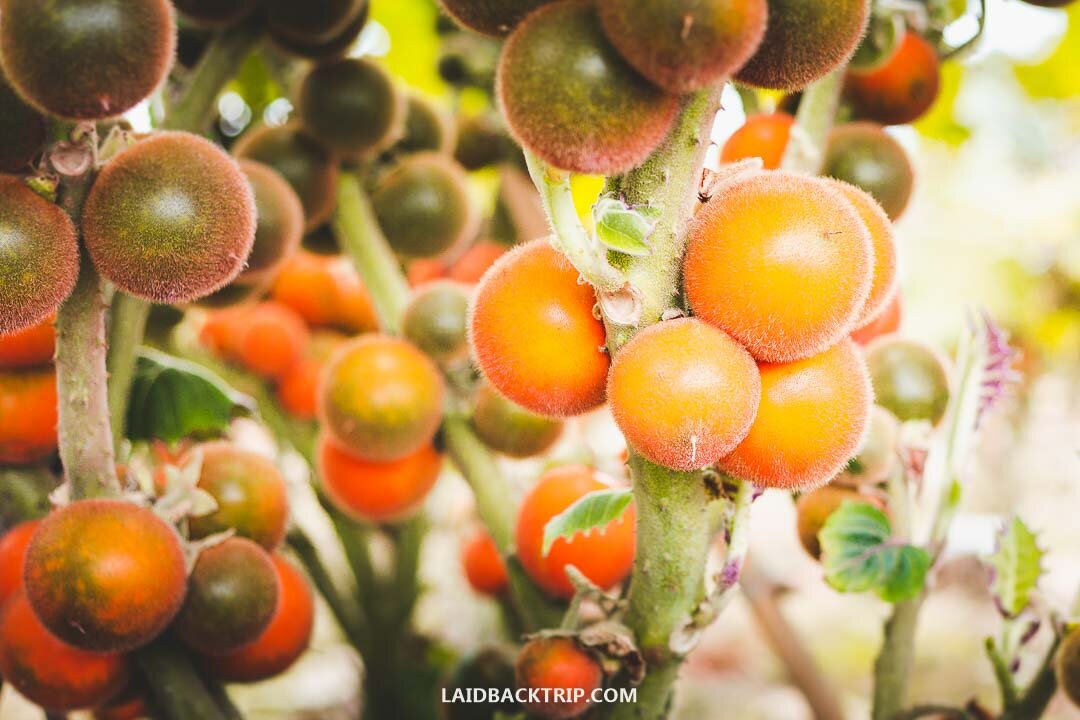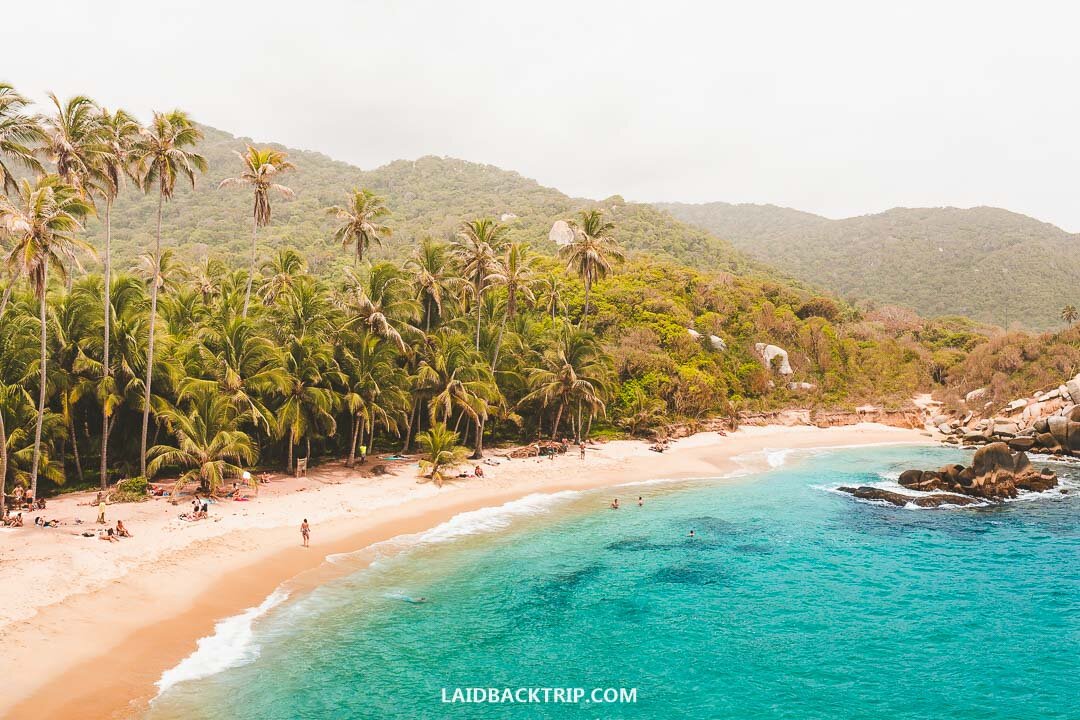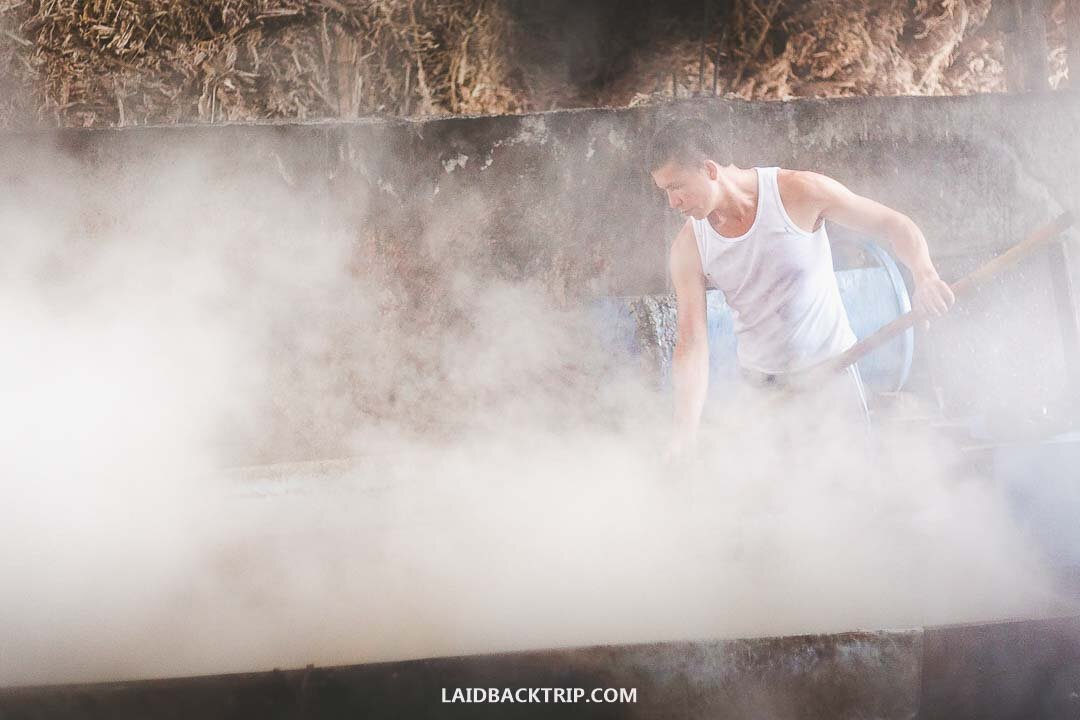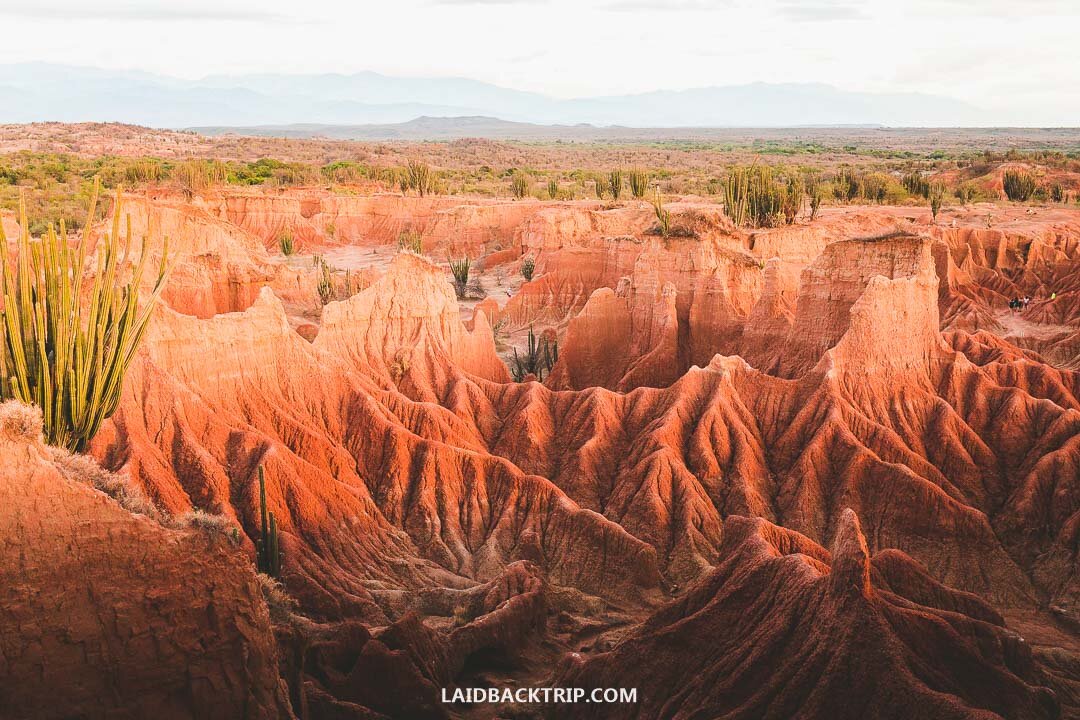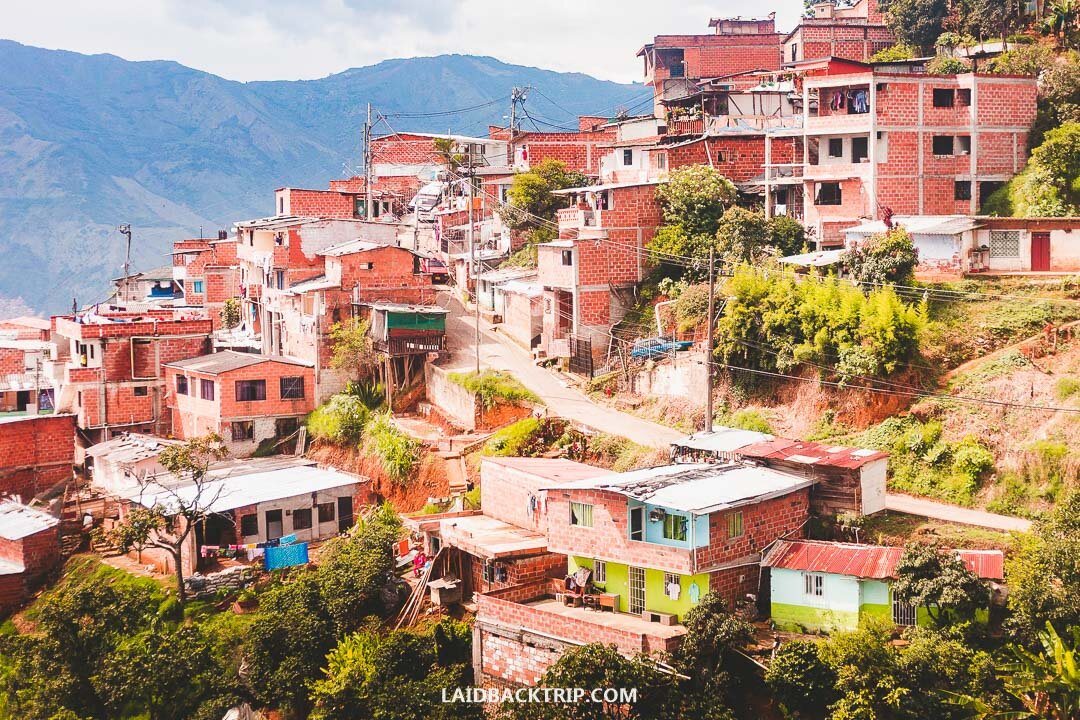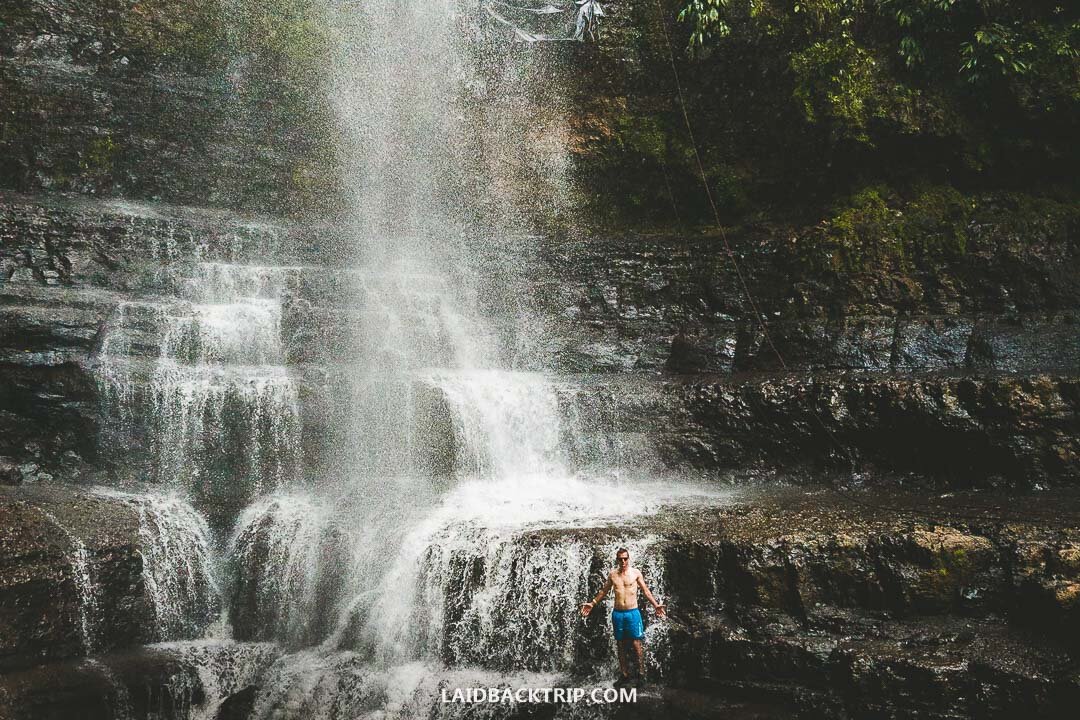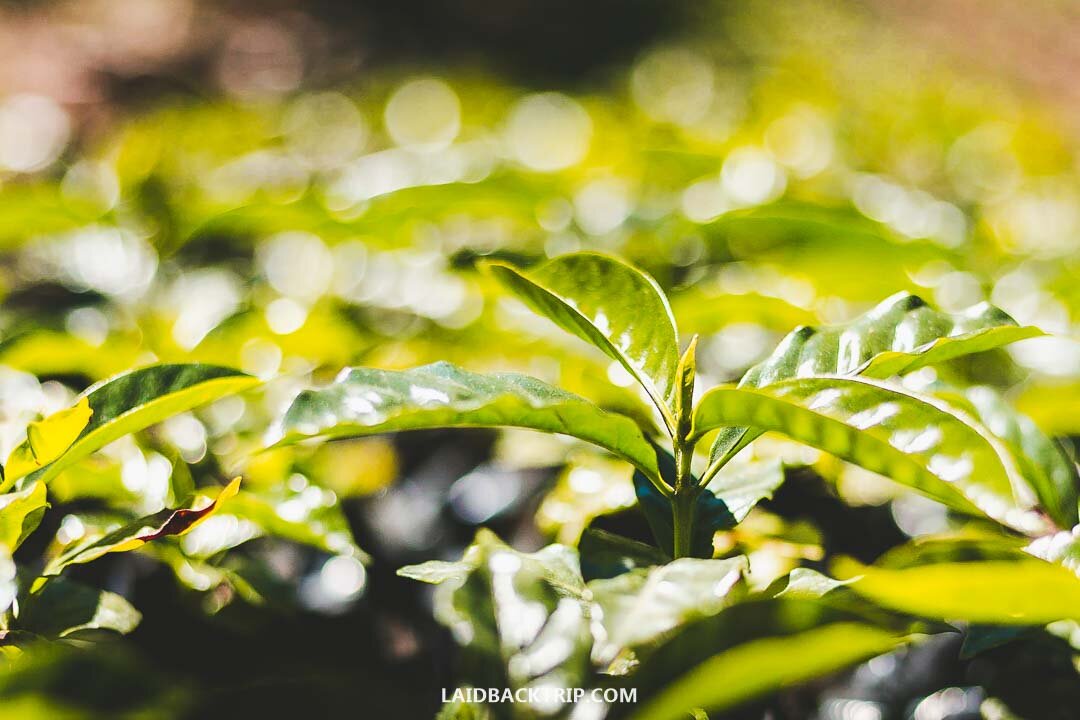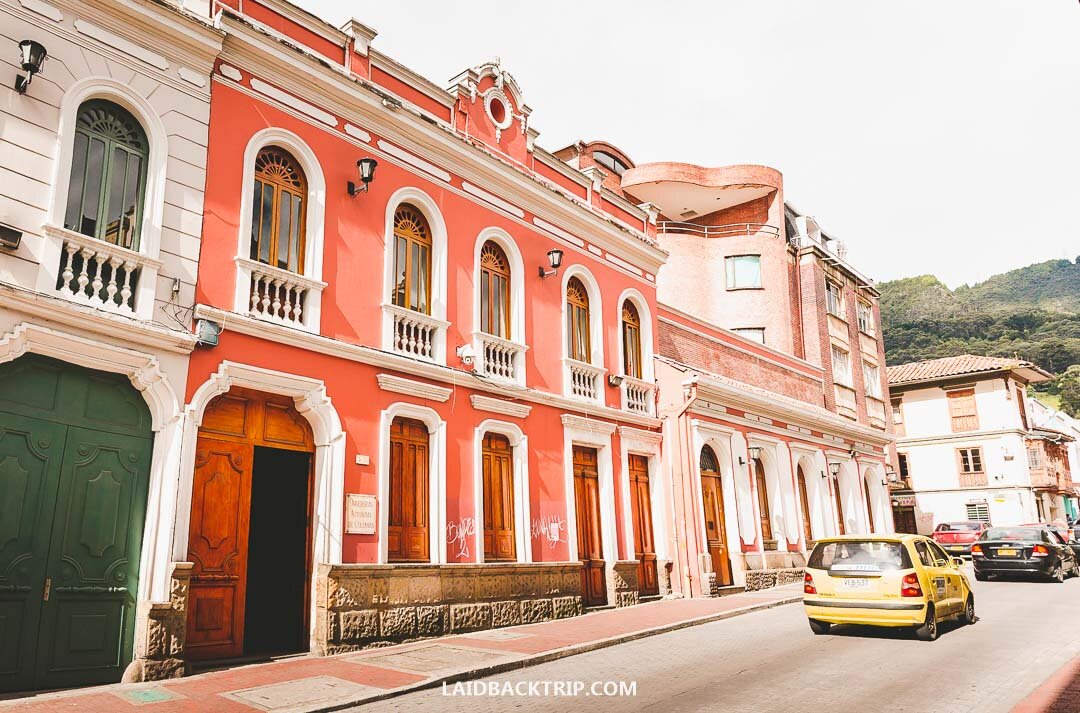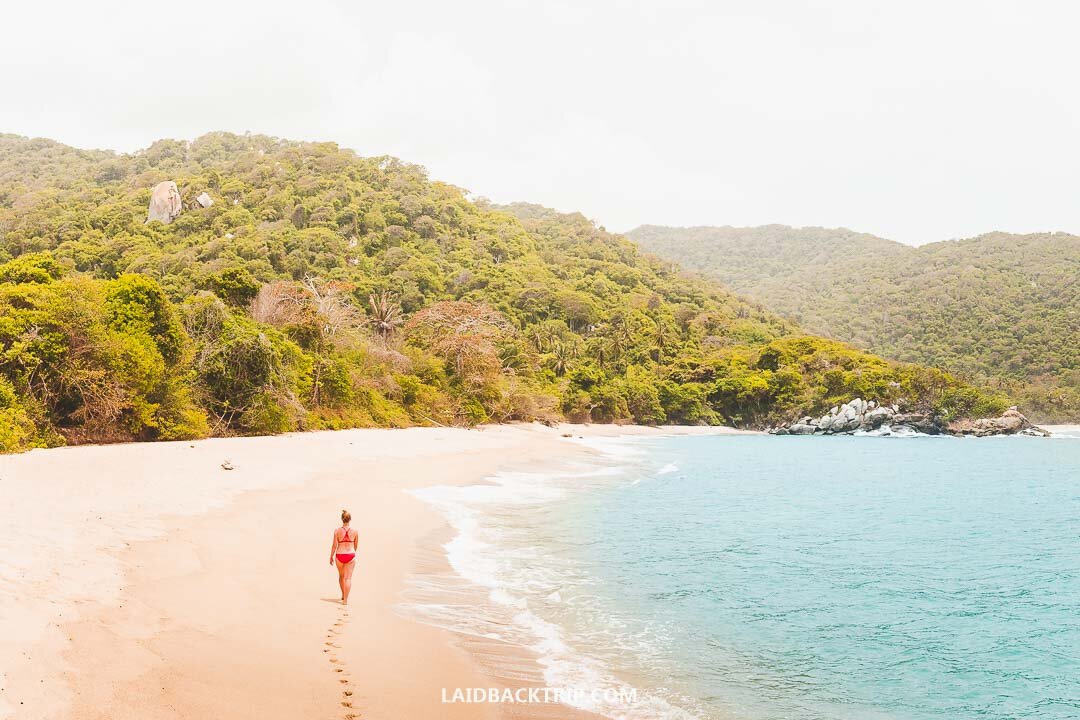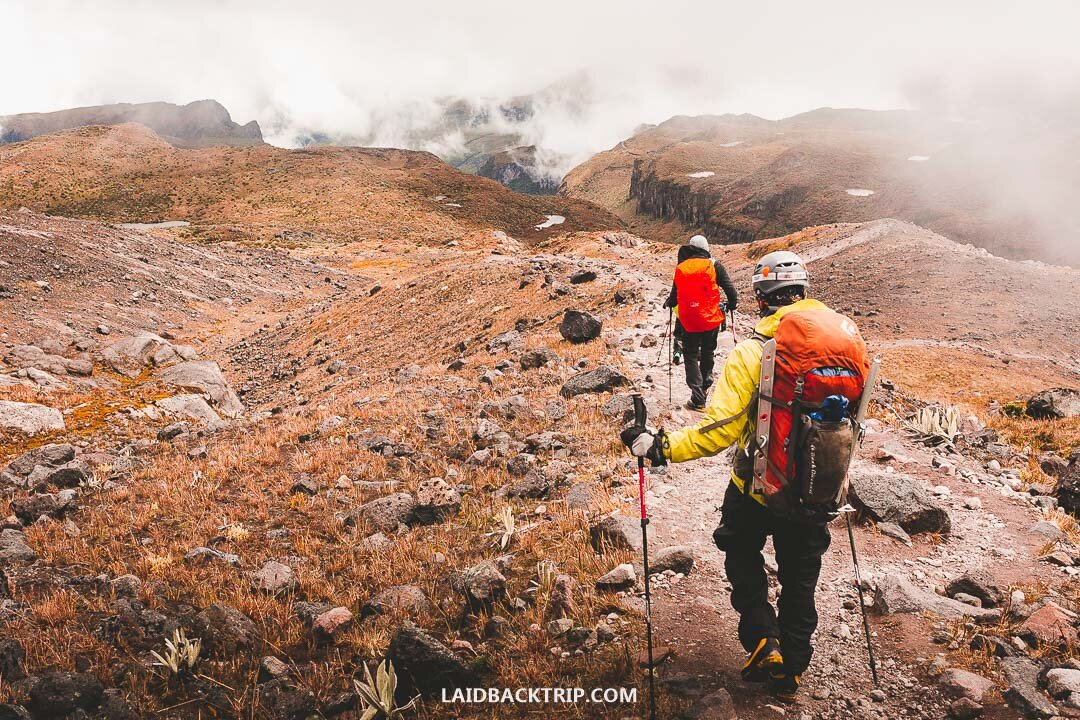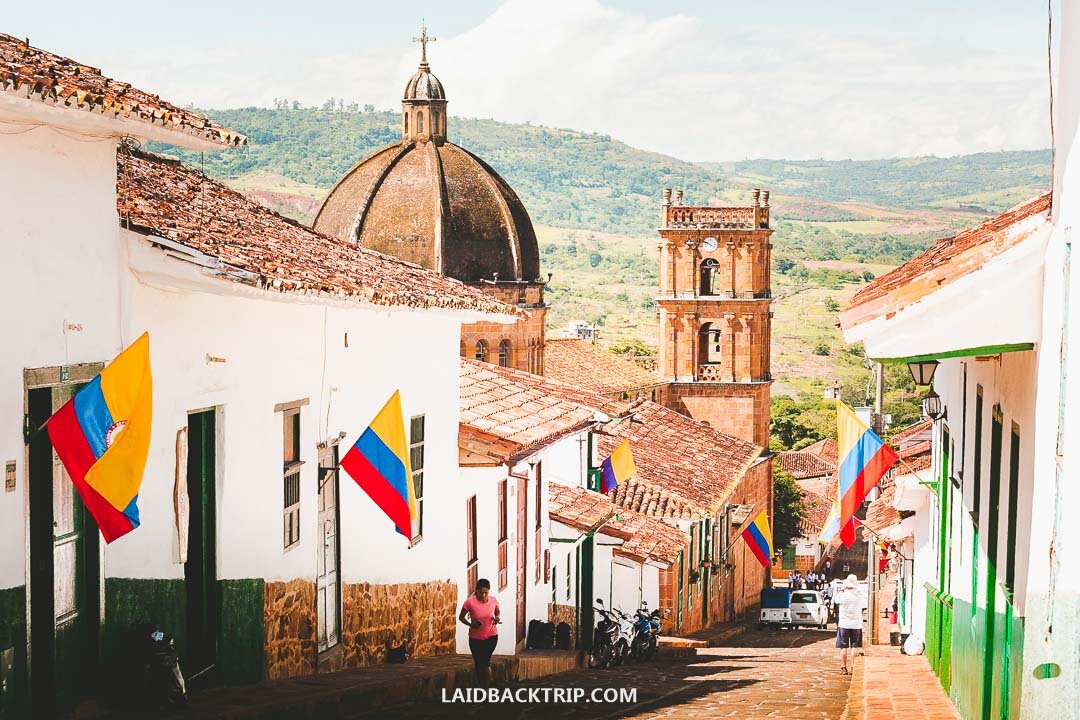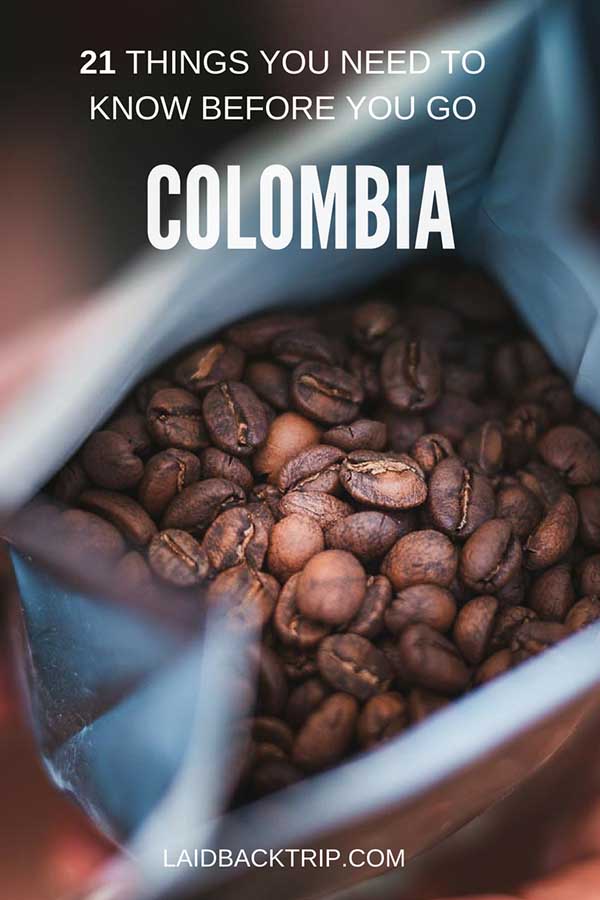21 Things You Need to Know Before Visiting Colombia
Colombia is a South American country with such rich diversity that instead of our planned one month visit, we stayed here much longer. An interest in traveling to Colombia grows every year, so we want to share with you 21 essential things you should know before planning a trip and visiting this beautiful country.
Colombia was the first destination we visited in South America, but we must admit, it stole our hearts. It is probably not a coincidence that many travelers have a very similar feeling.
Thanks to it, Colombia quickly gained a reputation of being one of the top travel countries on the continent.
Colombia is at the moment on the radar of many international travelers. Therefore we think you should know more about it before your trip.
Still, the country is unique, you can expect to deal with many specific situations, and in a nutshell, it is always better to be well-prepared.
Colombia is a very diverse country, and it offers an incredible number of attractions, from white sandy beaches to over 5000 meters high mountain tops.
But before you pack your stuff and set off, it is also good to know that customs, safety, or overall culture are very different from what you know by heart back at home.
This is why we've put together this list of things you need to know before visiting Colombia. It includes a few random tips we've collected during our travels.
Actually, there were 21 things you should know before traveling to Colombia, but we wrote this post on the road, and while editing it later at home, we came up with a few more, so the math does not match.
We hope you won't mind and will enjoy this post!
#1 WATCH YOUR STEPS
We've never stumbled that many times when walking on streets as in Colombia. Some parts of the pavement are very often missing, and all of a sudden, there is just a hole, so watch your steps, especially in bigger cities.
What is even more important, be really careful after the dark as some less visited places still have very poorly lit streets, and it is very easy to fall.
You might think that broken pavements are something you can get used to after some time, but it is actually quite hard.
Especially when sightseeing in the city with a camera in hand.
This problem is more in cities such as Bogota or Popayan than in smaller colonial towns, but we recommend you to mind your steps all the time.
Cities are not wheelchair and stroller-friendly because usually, you must surmount a big step when you want to get from the road to the pavement.
That does not mean Colombia is not a destination for families. Still, you will very likely find it much more comfortable to carry your kid in a baby carrier rather than struggle with a stroller.
Also, do not expect that vehicles yield at pedestrian crossings; always look around as traffic can be crazy.
#2 COLOMBIA SAFETY
Colombia surely does not have the best reputation when it comes to safety. And it's not just Colombia, but other countries on this continent as well.
That's why it is essential to stay safe in South America while traveling.
On the other hand, the situation has been rapidly improving, and we are now confident that you should be fine when you follow all the basic safety rules.
Of course, mishaps happen, but they happen anywhere in the world, not only in Colombia.
By the way, when talking about safety, you should arrange your travel insurance before the trip!
World Nomads provides travel insurance for travelers to cover their trip essentials, including sports and adventure activities.
SafetyWing is affordable travel insurance for backpackers, long-term travelers, and digital nomads.
Travel smarter and safer!
The association with drug cartels and violence slowly disappears.
But of course, even though we could read that safety in Colombia is much better than it used to be, we were a bit concerned before our travels to Colombia.
It was our first experience with visiting a South American country, and some of the articles we could read online made us feel uneasy.
Fortunately, our fears did not fulfill.
In all countries around the world, it is useful to know that some areas, either in the city or a country in general, are better to avoid.
Still, when you use your common sense, travel with someone, follow mostly the backpacker's trail, don't wear shiny jewelry, and don't walk lightheaded after dark, you should be fine.
You should always watch your belongings (once in Bogota, I left my phone in a jacket I had around my waist and was a victim of a sneaky robbery immediately), especially in crowded places and on public transport.
Always have your backpack with you, don't store all valuables in one place, and pass everything over without resistance in case of robbery.
To keep your valuables safe, consider purchasing a money belt or anti-theft daypack.
Because we take lots of photos during our travels, it is impossible to keep the camera in the backpack all the time.
We usually use a smaller mirrorless camera when walking around the city and use the larger one when traveling in the countryside.
Also, when Martin takes photos, I try to be around, stay cautious, and pay attention to his surroundings (however silly it might seem).
#3 FORGET YOUR DIET FOR A WHILE
Colombian food is hearty and filling. To put it mildly. In a nutshell, especially at the beginning of our trip, we felt a bit desperate, and it was hard to adapt to this change as this food was completely different from our usual eating habits.
Every meal we found was fried, not fresh, without herbs, or too sweet, not exactly what we usually eat.
Also, not every time we travel we can allow spending lots of time looking for a restaurant, that's why we often ended up with food we were not 100% satisfied with.
After some time, the situation improved.
We learned some Spanish words, we always in restaurants looked for menu del dia which consists of soup, the main course with meat, salad, and juice (for about 10 000 COP) and for dinner, we usually cooked something on our own.
Later, we discover some really nice restaurants and generally, after we traveled more south of Medellin, the situation improved and we looked forward to eating again.
The street food usually consists of empanadas (fried pastry with meat and potato filling), which we usually bought when traveling all day on the bus, and arepas (dough made of maize), which we found particularly ugly.
Certainly, we do not want to put you off.
It is just good to know that Colombia is not a foodie destination (when traveling on a budget), such as the whole of Southeast Asia, although it is, of course, only our individual point of view.
#4 COLOMBIAN FRUIT IS DELICIOUS
Although we found food in Colombia a little bit dull, we must say that fruit is incredibly delicious.
We got addicted to papaya and pineapple, which became our everyday must-have, but we also tried native fruits such as guanabana, guava, lulo, tomato del arbol, and many more.
The best place where to find fresh fruit is in local markets.
Luckily, you will find at least one market with veggies and fruits in every town or city.
In our post dedicate to long term travel, we mentioned that it is quite important to maintain a daily routine - for us, buying delicious fruit was a thing we always looked forward to.
We are not afraid to say it was one of the reasons why we were able to travel for so long.
Not only in Colombia, but South America overall.
#5 LEARN SOME SPANISH BEFORE YOU GO
English is not widely spoken in Colombia. To be honest, we were unpleasantly surprised that literally, no one speaks English, quite often not even people working in the tourism industry.
After a first few days when we had a problem ordering meals in the restaurant or figure out how much a bus ticket cost, we came to an inevitable conclusion that it is necessary to learn some basic Spanish.
We recommend you to have at least a translator on your phone ready; otherwise, you won't be able to get any help.
In case you have more time to prepare for your trip, either take a Spanish language course or buy a Spanish textbook.
Once you learn some basics, your trip will surely be more pleasant.
We traveled in South America for a year, and if there's one thing we regret, it is a fact we hadn't spoken Spanish fluently as we missed many opportunities to talk to locals more naturally.
#6 COLOMBIANS ARE VERY FRIENDLY AND HELPFUL
Colombians are very friendly and helpful. We are sure this is something every traveler to Colombia will confirm, and we also think it is one of the most important things to know before visiting the country.
When you ask for any information or advice, locals will try to help you immediately
And when they don't know the answer, they will surely find a friend around who can solve your troubles.
We even experienced a situation when a bus driver gathered all staff from a bus terminal, only because he did not know an answer to our question himself.
If you have a problem or don't know your directions, Colombians will do their best to help you out.
#7 COLOMBIA IS NOT A CHEAP COUNTRY (AS IT USED TO BE)
Colombia is not that cheap when it comes to traveling. Don't expect similar prices as in Southeast Asia for sure.
Bus tickets are pretty expensive and although the food and accommodation are slightly cheaper than in Europe, traveling in Colombia cost us more than we expected.
It is probably highly individual opinion, but we can imagine more friendly countries for our bank account as budget travelers.
The entrance fee to San Agustin Archaeological Park is not very budget-friendly, and adventure activities in San Gil don't come cheap either.
Sadly, the quality of services often does not reflect the price, but it is the same as in other countries. Some services are exceptional; some are very poor.
Even though Colombia is not the cheapest country we've ever visited, it is by far not the most expensive, and the visit was totally worth it.
Simply put, Colombia is not Brazil or Chilean Patagonia, and it's still a very affordable destination, though it's not as cheap as you might expect.
#8 PUBLIC TRANSPORT IS SLOW
It is very likely that you will travel around Colombia by public transport. And although it is possible to get by bus to almost all destinations, expect tiring journeys, winding and bumpy roads and a lot of sitting.
When traveling by bus, be prepared that the journey will be more than slow.
Our average travel speed was less than 40 km/h. The distance you can cover per day is limited, so don't forget to plan your itinerary accordingly.
After 4 days in Cartagena, we took a 15-hour bus to Medellin. The journey was long and tiring, and eventually, we found out that flight tickets were only slightly more expensive and would have saved us a bumpy ride.
#9 WEEKENDS AND HOLIDAYS GET BUSY
Colombians love to travel, especially in large groups. They also love to celebrate. It seemed to us that every weekend local people decide to take all their family and friends for a trip.
It is an awesome habit, but some places were, thanks to it, super-crowded, and accommodation in the most popular destinations booked.
Try to avoid long weekends, and if you travel on Friday or Saturday, book in advance.
Also, when you plan your itinerary, check out national holidays, and make sure you reserve tours or hotels, just in case.
Busy weekends have one big advantage, though. Some places and areas are safer.
That's why, for example, we hiked to Cerro de Monserrate in Bogota or explored Arvi Park in Medellin during the weekend, even though the trails were busy.
#10 SUGAR IS IN EVERYTHING
One of the first words we learned in Spanish were ‘sin azucar’, which means without sugar. We found everything in Colombia too sweet, to be honest.
From a classic bread to white yogurt, you must expect that sugar is an ingredient that is not missing.
What more, there's more sugar in it that you are probably used to.
Even if you are a sweet tooth, you might find the amount of sugar higher than acceptable. But maybe not. Feel free to let us know your thoughts in the comment section.
We had to make an effort while shopping and look for exceptions, which took us quite a lot of time.
#11 COLOMBIA IS A DIVERSE COUNTRY
We have never believed we would enjoy traveling in Colombia that much. The country is incredibly diverse, and it offers a place for every type of traveler.
You'll find in Colombia the Caribbean Sea, Pacific Ocean, wonderful sandy beaches, photogenic wildlife, diverse flora, mountain ranges, volcanoes over 5000 meters high, deserts, colonial cities, wax palms, indigenous tribes, and much more.
Generally speaking, Colombia is a destination for everyone, and creating the perfect Colombia itinerary is incredibly hard, as it is simply impossible to see everything quickly.
Nature and the fact Colombia is rich in architecture but also archaeological places means only one thing. The country is getting every year more and more popular.
#12 HOT WATER DOESN'T MEAN HOT IN THE TRUE SENSE OF THE TERM
Does your accommodation advertise a hot shower? Let's say that a hot shower in Colombia means rather tepid water.
It was a real treat when we found a place with warm water as it happened very sporadically.
It is ok in places such as the Tatacoa Desert, where temperatures often exceed 30 degrees Celsius.
Still, we would have appreciated warmer water in colder areas such as Bogota or Manizales.
On the other hand, we realize that we always stayed in cheaper hotels.
In case your Colombia budget is higher, you might have a different experience as we believe the service is better.
#13 POLICE AND SOLDIERS ARE EVERYWHERE
There is still a strong police presence in Colombia. You can see police officers and soldiers everywhere around.
And it takes time to get used to the fact that they are not here because something is going on, but they are on the streets to make sure that no issues will arise.
Safety, as we've already mentioned, has been increasing in this country every year, but it will probably take longer to experience the sensation of walking the streets of Colombia without being watched all the time.
#14 NETFLIX TV SERIES NARCOS
Have you seen the TV series Narcos from Netflix, and did you like it? Fine, but keep it for yourself when traveling in Colombia.
Drug trafficking and violence are still a very sensitive topic here in Colombia for understandable reasons, and locals have a feeling that the show doesn't depict the reality correctly.
Also, they don't want Colombia to be seen as a drug country again, so generally steer clear of this topic. This is one of the things you should know before traveling to Medellin, but other places as well.
In cities such as Medellin, which has been for long infamous for drugs and especially narco baron Pablo Escobar, is actually talking about this issue some kind of taboo.
The country has been transforming, and the transformation is a long and painful process.
So respect local peoples' decision and do not speak about this topic, at least publicly.
Luckily, there are plenty of things to do in Medellin that will allow you to see the city in a new light.
# 15 HAGGLING
You probably can try to haggle in Colombia, there are some places such as the markets (for example in Medellin), where it is even expected, but we didn't have the need, to be honest.
Unlike in Southeast Asia, we almost never felt overcharged, and most of the times we saw that locals pay the same price as we do.
For us, it was a nice change not to bargain all the time.
#16 BAGS OF WATER
You can buy water in big plastic bags, and although it is not the most practical thing, it helps you save some money as it is cheaper than bottled water.
We bought a few bags of water before traveling to the super hot Tatacoa Desert, as the water in the desert was really expensive.
But let's talk about water more closely.
Same as any other developing country, Colombia also has a huge problem with plastic. We are not afraid to say that it is your responsibility as a traveler to reduce your plastic consumption to the very minimum.
We know it is often not 100% possible, but when you buy, for example, a 5-liter plastic bag or barrel of water, it is much better than when you buy five one-liter bottles.
Therefore, when traveling abroad, not only to Colombia, always have your favorite reusable water bottle.
On top of that, most of the better hostels and hotels have a large tank of water in the lobby where you can refill your water bottles for free.
You might want to check out this water bottle with integrated filter if you want to try something new and sustainable.
#17 BEAUTY IS IMPORTANT
You might notice that Colombian girls are very often well-positioned when it comes to world beauty competitions.
When in Colombia, we could see that the cult of beauty here is really strong, and everyone, guys included, care about their visage, maybe too much if you ask.
An obvious trend is to wear braces at every age to have straight teeth, and it also seems that plastic surgery is a real thing here.
We do not want to say whether it is good to know, but it is surely a thing you will notice.
It is necessary to say that we often felt badly dressed in our outdoor and functional clothes.
Speaking of beauty, the colonial town of Barichara is often considered the prettiest town in Colombia.
# 18 COFFEE
Where else to drink coffee than in Colombia, the country with one of the world's largest productions?
Colombians usually drink coffee called tinto', a small, cheap, and sweet cup you can buy along the road.
Tinto is the second quality coffee, as most of the premium quality is exported (it is too expensive for locals).
If we can give you advice, avoid this type of coffee and rather visit a good coffee shop where the cup of coffee costs more but is also better.
Besides visiting a coffee shop, your other alternative is to visit a proper coffee farm in one of the coffee towns such as Salento, Jardin, or Manizales.
We visited an organic coffee farm in the heart of Zona Cafetera, and not only could we see how hard it is to get a tasty cup of coffee on customers' tables, but also we could taste the best coffee we've ever had.
And by the way, Salento is also home to Cocora Valley, where you will find the national trees of Colombia - wax palms.
# 19 COLOMBIANS ARE VERY POLITE
Even in informal everyday conversation, Colombians talk very politely, and instead of using simple sentences, they always say extra thousand words.
Although it is nice, this habit always made it much harder for us to understand the real point as our Spanish was not the best.
And when we politely asked the person to repeat the sentence more slowly, we usually receive the exact same answer, with a few extra new words.
It is funny when we think about it now, but it was a bit stressful on the road, especially when we were in a hurry.
# 20 TAXIS
Generally, it is safe to use a taxi in Colombia. It is always better to ask in the hotel or in the restaurant to call a radio taxi for you than to hail the cab on the street.
Always agree on the price before you sit in the car.
We never had a problem with yellow taxis; drivers always brought us to our destination safely and asked for a reasonable amount.
You can use Uber in bigger cities. Note that Uber in Colombia is illegal, so it is always better to sit in the front next to the driver, so it looks like he is giving a ride to a friend, not to a customer.
# 21 CASH IS KING
You won't buy much with your credit card in Colombia. You can use it in some shops (Exito) and better quality hotels, but cash always has a priority.
The highest value bill is 50 000 COP, and the highest amount we were able to withdraw was 780 000 COP. If you see a garish green ATM with a black Servibanca sign, that's the one you are looking for!
As it is not very safe to carry around a lot of money with you, always withdraw only as much as you need for a few days. Just make sure that your next destination has an ATM.
And when visiting places such as Tayrona National Park, make sure to bring enough cash for the entire length of your stay as there are no ATMs at all.
#22 YOU CAN'T SEE EVERYTHING
Colombia is a large country, and even if you can travel indefinitely, you would need years to see it all. That's being said, and you simply cannot see everything this country has to offer.
That's not a bad thing.
When creating your travel itinerary, focus on the top highlights, and if time allows, make sure you visit an interesting destination off the well-trodden path.
For instance, we didn't hike to Lost City in the Colombian north, as it was too expensive for us at the time.
And we rather opted for treks in Peru, such as Salkantay Trek and Inca Trail.
Although we usually do not travel to countries we have already visited, we have a feeling we will break this rule of ours quite soon.
Colombia is a captivating country, and we actually see it as a positive that it is impossible to see it all. It is a reason to come back one day.
# 23 RAINY AND DRY SEASON
If there's something you should know before planning your trip to Colombia, is that you can experience two distinct seasons: dry and rainy.
According to us, Colombia is a country you can visit any time of the year, but you should consider those seasons.
It is also important to know that you can expect a very different climate in Bogota and Tayrona National Park on the same day because of the diversity and vastness of the country.
In general, the best time to visit Colombia is between December and February. It is the dry season that usually guarantees clear skies and warm temperatures.
We visited Colombia in July and August, which is actually the second-most-popular season. It is a short break between rains, so we enjoyed mostly nice weather, and it rained only a few times in the afternoon.
The rainy season is then April to June and September to November. But what is important to realize, there's not bad weather, only bad clothing.
#24 PACK LIGHT
When talking about the weather, we cannot skip writing a few words about packing for a bit.
Because of all the reasons mentioned above, you cannot arrive in Colombia wearing only flip flops and a straw hat.
Before your trip, go through all the destinations you want to visit. Check out our blog post Best Places to Visit in Colombia to find more inspiration.
Your itinerary will most likely include a handful of beautiful colonial towns, coffee regions, mountains, and you will probably spend some time on the beach.
For example, we climbed the frozen Santa Isabel volcano in Los Nevados National Park, but we also stayed four days in Tayrona National Park on the Caribbean Sea's shores.
As you can see, you need to pack a bit of everything.
If you want to know more, check out our more detailed post: South America Packing List.
#25 IMPORTED PRODUCTS ARE EXPENSIVE
Imported stuff is expensive not only in Colombia but in general in South and Central America.
Sunscreen, bug repellent, or mouthwash you are used to, will be several times more expensive than in your home country.
And we do not talk about worldwide clothes brands. It is another reason why packing right for your Colombia trip is so essential.
Pack right, and it will save you a lot of money.
#26 YOU ARE GOING TO FALL IN LOVE WITH COLOMBIA
No matter how traveling in a foreign country can be challenging, we have one important announcement to say.
You are going to love Colombia.
It is probably the most significant thing you need to know before visiting Colombia. It will change your life.
People, nature, history, it is all so wonderful that you won't want to leave.
And we think it is really what traveling is all about.
Despite all the differences in life, different opinions, beliefs, traveling brings people closer.
Travel Resources
Here you can find links to all the travel resources we use and which you might find helpful when planning your next holiday.
Accommodation: When looking for accommodation, we usually search hotels via Booking.com or Hostelworld.
Tours: Although we love to travel independently, some places are better to visit with a guided tour.
We prefer GetYourGuide for its easy-to-use interface and solid reputation. Another great alternative is Viator.
Rental Cars: When going on a road trip, we always use Rentalcars.com, a reliable site for booking a rental car in advance.
Flight Tickets: When looking for flight tickets, you can search Skyscanner to find the best price.
Travel Insurance: World Nomads and SafetyWing cover against risks of travel.
